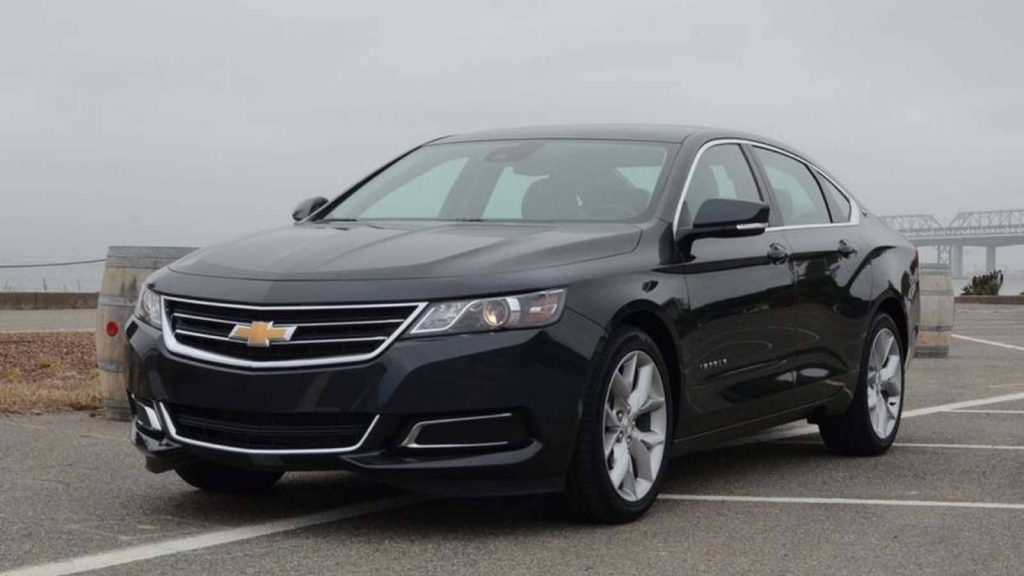Chevy Impala 1967 is an iconic American car, which gained a second wave of popularity across the globe after the Supernatural TV show. The 1967 Chevrolet Impala belongs to the third generation of the Impala, produced in 1965 – 1970.
The word “Impala” was borrowed by Chevrolet from the African antelope. This is how the company wanted its model to be positioned — as a large, roomy, but sporty and fast car.
One of the main features of the 1967 Chevrolet Impala was three-section horizontal taillights instead of round in 1965. The body of the car has straight and sharp lines, which was a pure celebration of the “bloated and rounded” cars era sunset. Also, the car has a lot of chrome in the American way: large bumpers and a wide metallic grille. The third-generation of Impala also got a crumpled steering column and three-point seat belts.
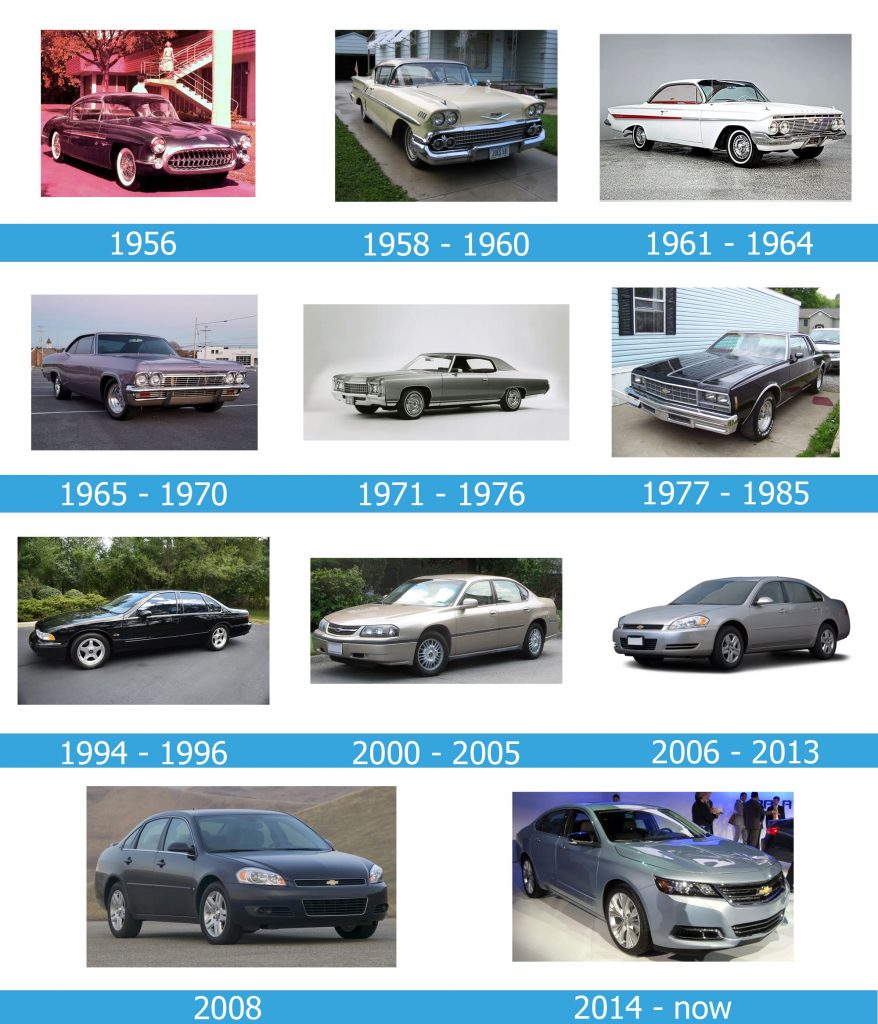
In 1967, for the first time, Impala had a spring suspension for all wheels, which was not typical for American cars of that time, when the rear suspension was leaf springs.
Let’s have a closer look at all generations of the iconic car, and their main features, which reflected the progress of the American automaking industry and the understanding of style.
1956
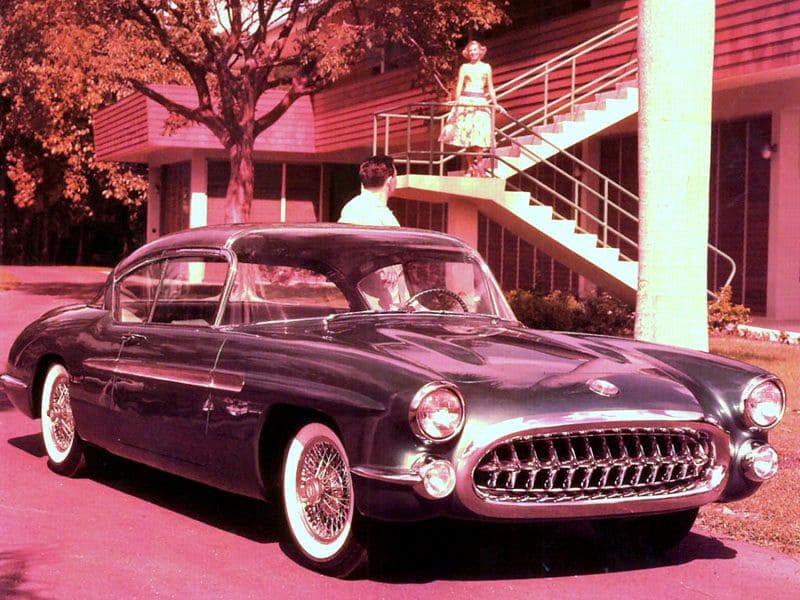
The original 1956 Chevrolet Impala was first shown as a concept car at the 1956 General Motors Motorama. Though the mass production of the Impala cars starts only two years later.
1958 – 1960
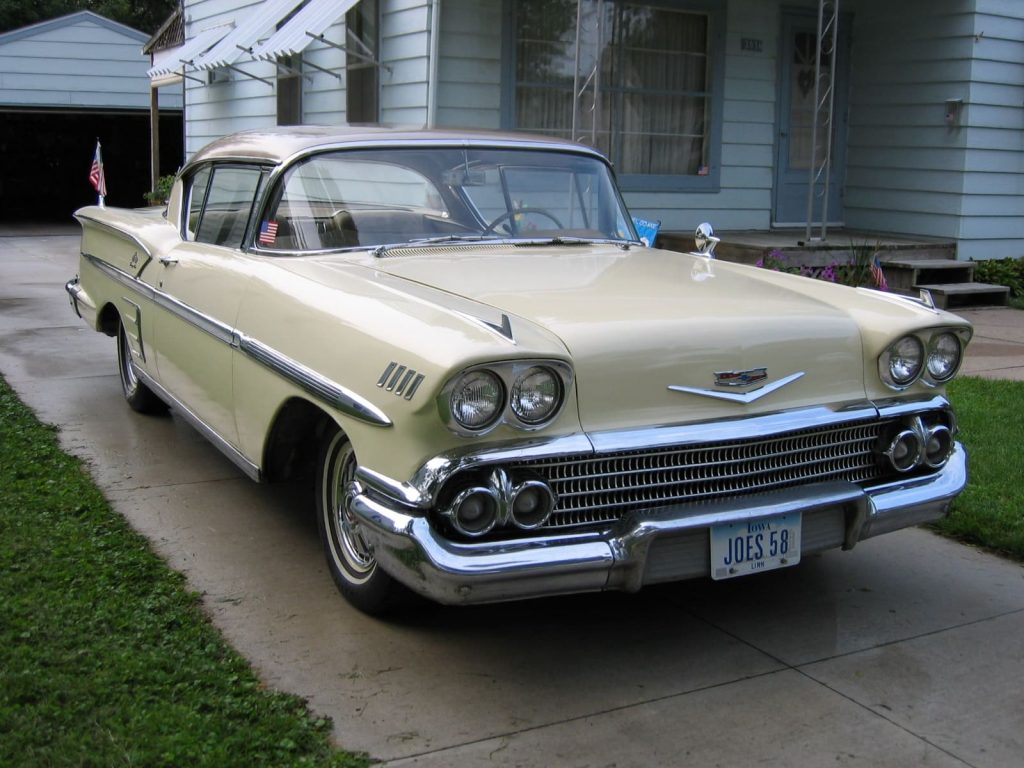
In 1958, Chevrolet introduced Impala as the name of a new Bel Air model. The package was more sporty and luxurious in trim and was sold with the idea of a luxury car available to every American. It also had six round taillights, three on each side instead of four, which were used on most generations of the model.
In 1959 the Chevrolet Impala became a separate model, and immediately — the most commercially successful of all Chevrolet. It featured a very distinctive styling, with horizontal teardrop-shaped taillights.
The 1960 model retained virtually the same bodywork as the previous year, but the radiator grille was more minimalist in design and the three-round taillights reappeared.
1961 – 1964

By 1961, the body had been thoroughly updated. The design got simpler and more concise. Only in 1961, the Impala was offered as a two-door sedan, which was not very successful. Also in this year, the Impala SS sport package was released. The 1961 coupe had a rounded roof, sometimes referred to as a “bubble top”.
In 1962, the body was altered, becoming more square. The coupe received a rectangular shaped roof. A characteristic detail was the rear body panel with massive aluminum trim.
The 1963 model looked a little different from the previous model, with the main differences being a simpler sidewall line pattern and an almost flat windshield instead of a half-panoramic one. The body had the accentuated faceted contours that were becoming fashionable at the time. In terms of design, the 1963 model is often considered the most attractive of all the early Impala cars.
The 1964 body was a stylistic continuation of the successful 1963 model, and so was only slightly modified, the main difference being the rounded radiator grille with a larger checkered pattern.
1965 – 1970

The third generation was seriously technically modified. It received a spring suspension for all wheels, the frame was changed from X-shaped to more massive peripheral. The body was also completely new.
The Impala range of these years included a convertible, coupe, two- and four-door hardtops, four-door sedan, and wagon.
From a commercial point of view, this generation was extremely successful – in 1965 sold more than 1 million of these cars, which is a record for a full-size car.
As before, the SuperSport modification was offered, it featured a split-seat interior with a center console, as well as a wide shiny molding with a black inset going under the taillights.
In 1965, a new luxury package, the Impala Caprice, became a separate Chevrolet Caprice model in 1966. It was one level higher in the range than the Impala, but until the late 1970s, the Impala was the best-selling Chevrolet’s full-size model.
1971 – 1976
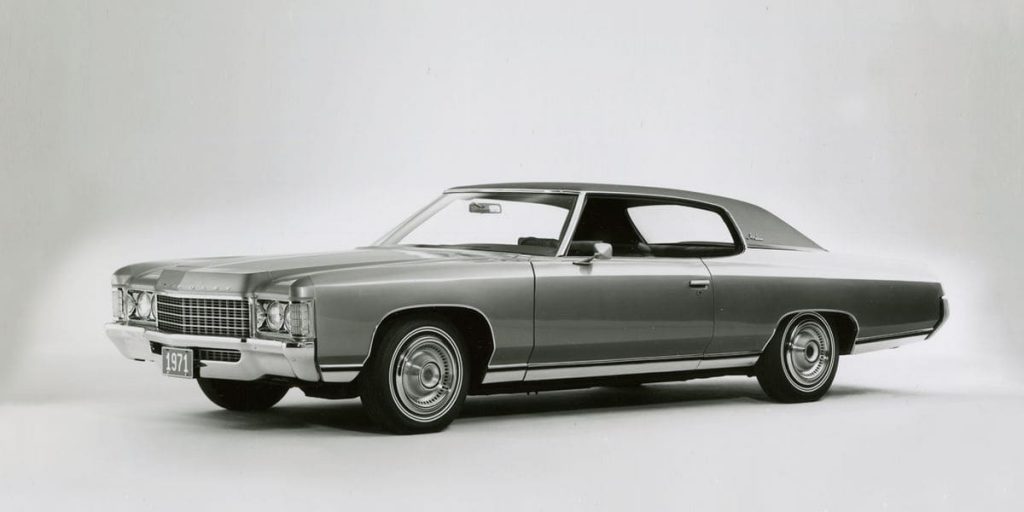
The fourth-generation was the largest in Impala history. Though those were the crisis years for America.
In the 1970s Chevrolet started trying to attract customers by creating all sorts of special configurations and limited editions. There were two special options for the Impala model:
1) “Spirit of America” – offered in 1974 for the Sport Coupe model, including white bodywork, red and beige interior, interior-colored carpets and seat belts, white vinyl top, two sport-style exterior mirrors, white rally rims, wide moldings with rubber inlays and body decal stripes to match the interior color, as well as special decals on the fenders and dashboard.
2) “Landau” – offered in 1975-76 and carried over to the next generation. This package included exclusive body colors, sport exterior mirrors, wheels hubcaps finished in body color, Landau-style vinyl top (vinyl covered the back of the roof up to the center pillar), moldings with rubber inlays, and decal stripes on the body.
1977 – 1985
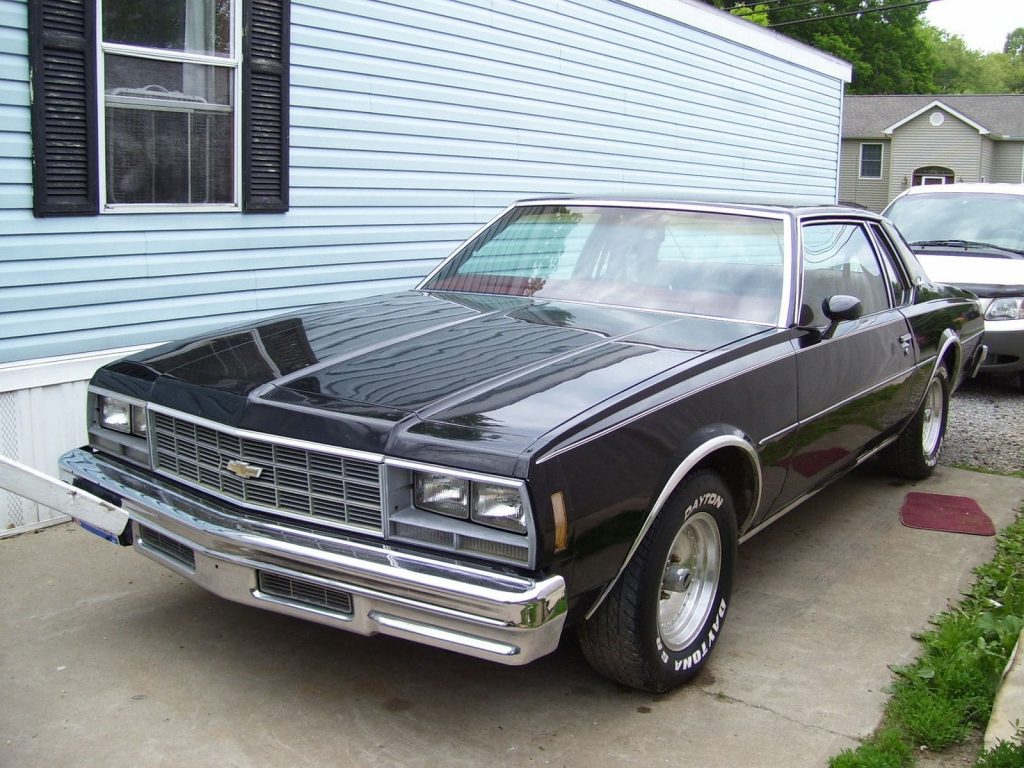
In 1977 the frame of the Impala got shortened, as well as the body. The narrower and smaller car still featured a roomy and comfortable salon, though it became lighter and more fuel-efficient.
In the 1980s, the interior and exterior of the cabin also changed slightly, the grille is modified, bumpers, side repeaters are located on the side of the headlights.
By the mid-1980s, the Impala was in demand mainly from cab companies and police. In 1985, production of the car under this designation was discontinued. The single-platform Chevrolet Caprice was produced unchanged until 1990, after which it received a new body and was produced as such until 1996.
1994 – 1996

The Chevrolet Impala was reborn in 1992 at the Detroit Auto Show as a concept car under the direction of GM designer John Moss. The concept car was a bit shorter than the Caprice and had an 8.2 liters engine.
In 1994, the car was put into production at the GM plant in Texas; externally the car was fully consistent with the concept car except for the chrome Chevrolet emblem on the grille.
2000 – 2005
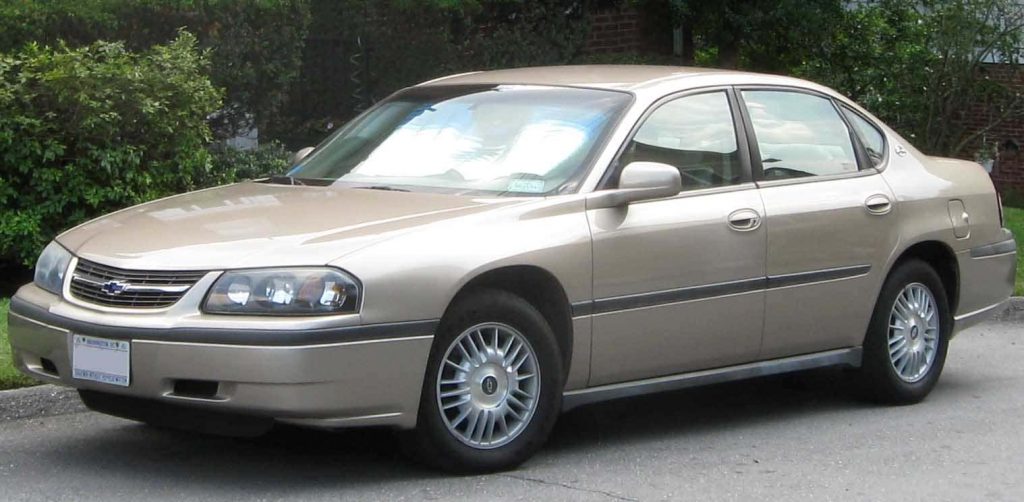
The seventh-generation of Impala was equipped with anti-lock brakes, traction control, fog lights, sunroof, climate control, and even an information center.
The 2004 to 2005 Impala SS was powered by a 231 V6 supercharged 3.8-liter engine. It was rated at 240 horsepower, which allowed this light sedan to go from 0 to 100 km/h in 6.5 seconds, 0,6 seconds faster than the 1990 Impala SS.
2006 – 2013
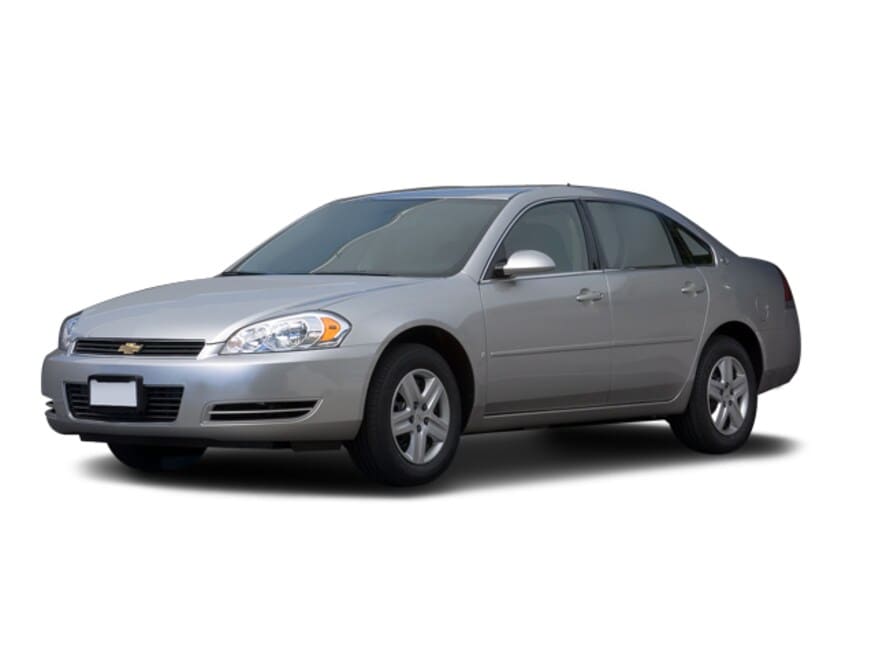
The new generation Impala was introduced in 2005 at the Los Angeles Auto Show. The most interesting feature of the new model was in the use of the most productive SS version of the sedan 5.3-liter small-block V8 from the 1996 Chevrolet Caprice. Impala SS can go from 0-l to 100 km/h in 5.6 seconds. The SuperSport model, in addition to the aforementioned engine, featured leather interior trim, 18-inch alloy wheels, and manual transmission.
The most luxurious version of the Impala was the LTZ. In addition to the basic equipment, LTZ includes a leather interior with decorative wood accents, CD/MP3 changer for six CDs, stereo system with eight speakers, sunroof, climate control, and improved security system.
In 2011, there was a choice of two engines: 3.5-liter V6 (for LS and LT versions) and 3.9-liter V6 (only for LTZ).
In 2012, Chevrolet unified the engines into a single 3.6L LFX that delivers 302 hp. The four-speed automatic transmission is replaced by a six-speed.
2008
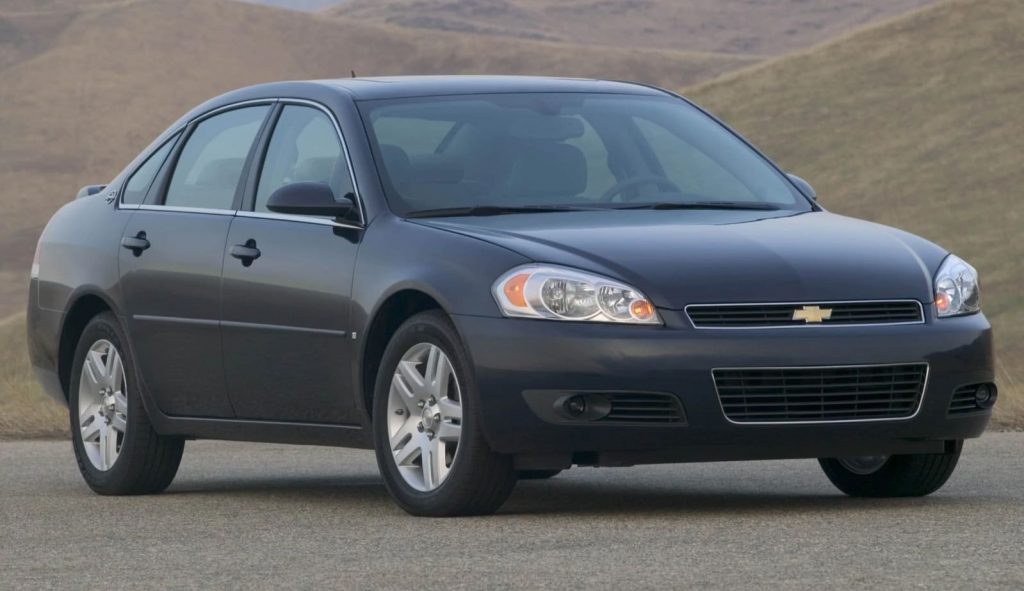
To celebrate the 50th anniversary of the iconic Chevy Impala, the limited edition car was released in 2008. The Impala 50th Anniversary Edition was based on the mid-priced LT model, with larger rims, two-tone leather upholstery, and 50th Anniversary insignia on the seats.
2014 – Today

In 2014 Impala was significantly transformed, the new High-Intensity Discharge headlights and large (18-20’’ inches) wheels were added.
In addition to the updated design, the 2014 Chevrolet Impala has ventilated seats and a heated steering wheel. Comfort has always been an Impala priority, and it can be seen in all the generations of the car.
